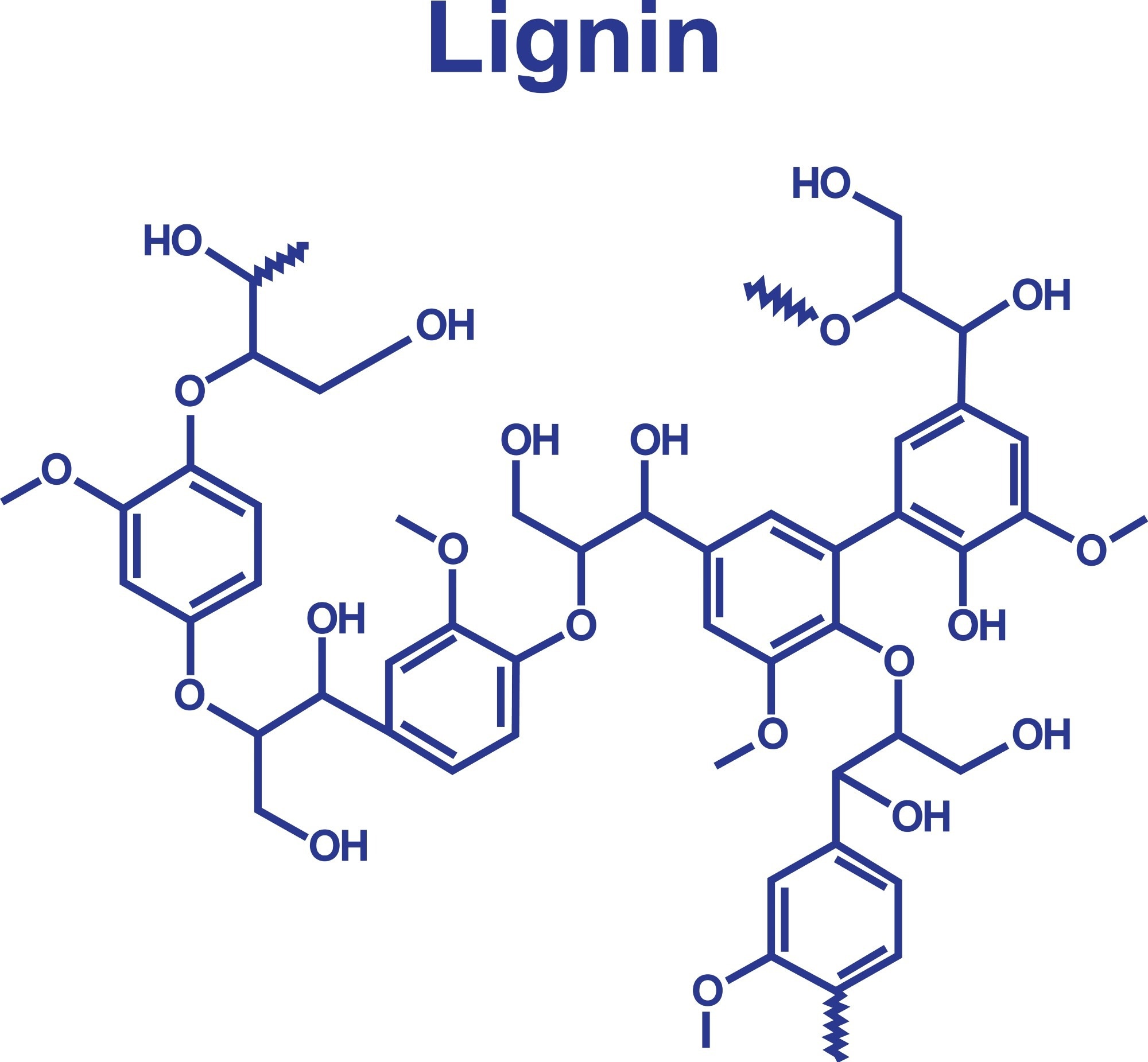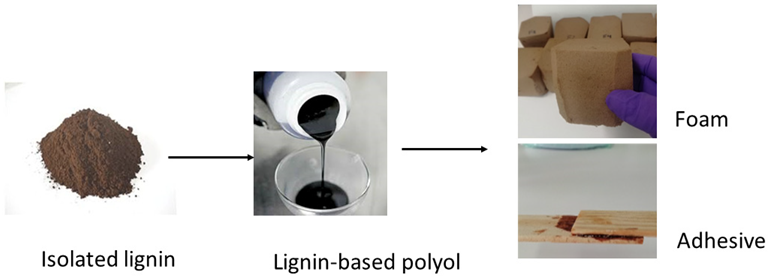 By Surbhi JainReviewed by Susha Cheriyedath, M.Sc.Sep 8 2022
By Surbhi JainReviewed by Susha Cheriyedath, M.Sc.Sep 8 2022In a review recently published in the open-access journal Materials, researchers discussed the recent progress in the use of lignin as a renewably sourced component for eco-friendly polyurethanes.

Study: Lignin as a Renewable Building Block for Sustainable Polyurethanes. Image Credit: Ali DM/Shutterstock.com
Background
Polyurethane (PU) is known to be one of the most versatile polymeric compounds. Almost all of the industrial building blocks used to create PUs come from petroleum resources. To replace or reduce the use of petrochemical resources and hazardous products with renewable and safer products that at least have the same qualities as traditional products is a goal that both industry and academia have been working to achieve. Polyols, one of the constituents of polyurethanes, are already manufactured utilizing renewable resources.

Schematic representation of the reaction between a polyol and a diisocyanate to form the urethane linkage. Image Credit: Vieira, F. R et al., Materials
Lignin is the most prevalent renewable source of aromatic polymers found in biomass and has the potential to partially replace polyols derived from petrochemicals. Currently, 50 to 70 million tons of lignin are produced annually by the pulp and paper industry, and most of it is burned to recover energy.
Although lignin has the essential chemical properties to be utilized as a polyol and can be added directly to PU formulations, the type and number of OH groups depend on a number of variables, including the extraction method and the type of wood. PUs are among the most significant polymers that may be produced from lignin. Consequently, PUs must undergo chemical alterations to turn them into liquid polyols, a process which is known as liquefaction. Furthermore, the usage of hazardous isocyanate persists despite substantial research to create bio-based polyols.
About the Study
In this study, the authors discussed the methods that could be used to separate lignin from pulping processes, the primary methods for the turning of solid lignin into a liquid polyol to make bio-based polyurethanes, the difficulties associated with its characterization, and an evaluation of recent advanced in this technology. The role of PUs made from bio-based polyols, like lignin, were considered for support of the circular economy.
The team reviewed the primary methods that were employed to replace isocyanates to make non-isocyanate polyurethanes (NIPUs) derived from lignin. In this review, the authors discussed the primary chemical methods for using lignin as a component of bio-based polyurethanes.
The researchers presented and debated the current state of technology for the conversion of technical lignin into liquid polyols by taking into account the quality of lignin, the source of technical lignin, the properties of produced lignin-based polyols, the variables of liquefaction methods, as well as the primary barriers to the conversion of lignin into liquid polyether-polyols and their characterization. Further, methods for the creation of NIPUs generated from lignin to produce biodegradable and safer goods were covered.

Polyurethane products from lignin-based polyol (LBP). Image Credit: Vieira, F. R et al., Materials
Observations
Several studies reported the utility of multiple life cycle assessment (LCA) methodologies for the same polymer in the same scope, which resulted in 200–400% variations in the results. A forestry firm from Canada named west Fraser timber company opened a facility in Hilton in 2016 with the capacity to generate up to 30 tons of kraft lignin powder daily. When a synthesis process was scaled up, it was difficult to maintain the high pressure of 20–40 bar necessary for the insertion of CO2 into epoxidized lignin.
Bis-alkyl carbamates and polyol reacted at greater temperatures of 100–200 °C, over longer periods of more than 24 hours, and with the generation of low-molecular-weight byproducts such as methanol. High temperatures were required for the reaction between primary amines and phosgene in the industrial synthesis of isocyanates.
For the creation of polyurethane (PU) elastomers, mechanical characteristics like tensile strength, toughness, and high elongation at break were highly desirable. It was demonstrated that the use of modified or unmodified lignin in the synthesis of PU elastomers plays a significant role in the improvement of these characteristics, with a percentage of lignin up to 40% suitable to maintain their mechanical properties.
Unmodified lignin was typically used as a partial replacement for petroleum-based polyol in the resulting PU to reduce phase segregation caused by the poor miscibility of unmodified lignin in traditional petroleum-based polyols. This concentration was typically below 30% wt.%. According to some recent studies, the concentrations of cyclic carbonates ranged between 10 and 30 equivalent molars, and as their concentrations increased, the grafting of lignin chains onto them also increased slightly.
Temperatures between 100 and 200 °C were observed for the oxyalkylation of alcohols, amines, and thiols, while temperatures between 150 and 200 °C were reported for the reaction of cyclic carbonates with alcohols.

Summary of lignin-based polyurethane patents from 2013 to June 2022 obtained at the WIPO. Image Credit: Vieira, F. R et al., Materials
Conclusions
In conclusion, this study elucidated that technical lignin, a waste product of the pulp and paper industry, is a useful energy source made of natural aromatic polymers with high carbon content. It could be used to replace petroleum-based polyols used in the creation of PU products.
The authors mentioned that to prevent the requirement for chemical modification, advancements in the depolymerization and separation of lignin into clearly defined oligomonomers are necessary. They also stated that LCA studies and technical-economic analyses should be taken into consideration by researchers and industry as final recommendations on the creation of lignin-based polyurethanes.
The team believes that technological lignin could be used as a raw material for the creation of polymeric goods like polyurethanes rather than only being burned for electricity, helping to create a society that is more sustainable.
References
Vieira, F. R., Magina, S., Evtuguin, D. V., et al. Lignin as a Renewable Building Block for Sustainable Polyurethanes. Materials, 15(17), 6182 (2022). https://www.mdpi.com/1996-1944/15/17/6182
Disclaimer: The views expressed here are those of the author expressed in their private capacity and do not necessarily represent the views of AZoM.com Limited T/A AZoNetwork the owner and operator of this website. This disclaimer forms part of the Terms and conditions of use of this website.